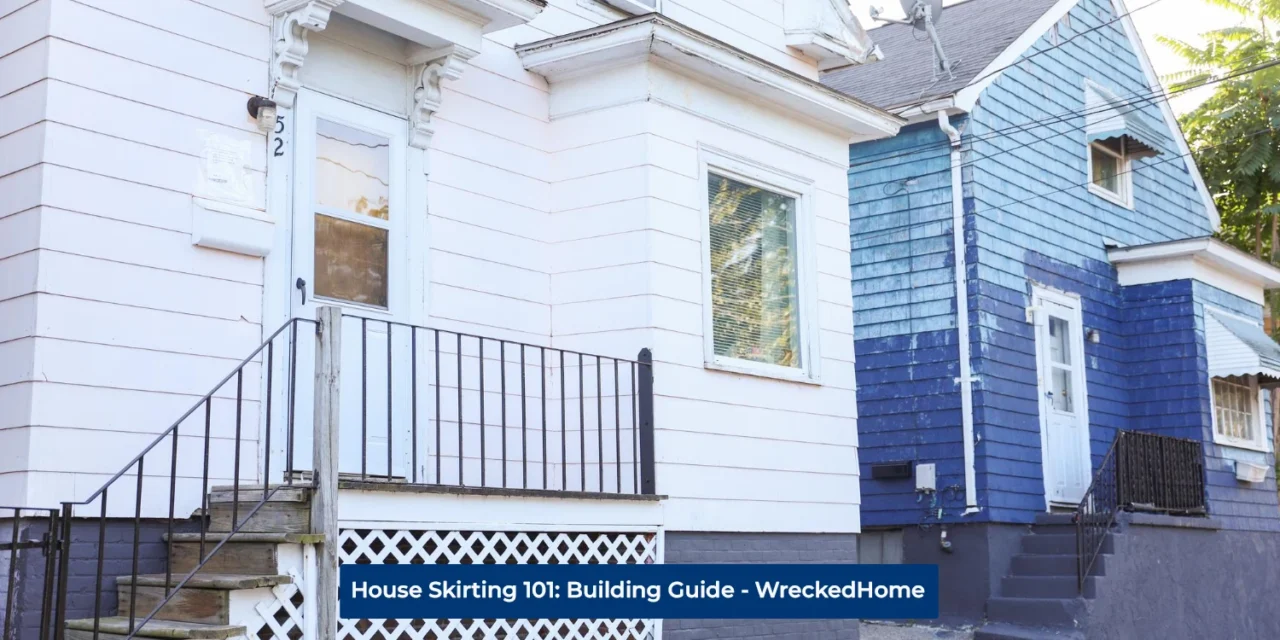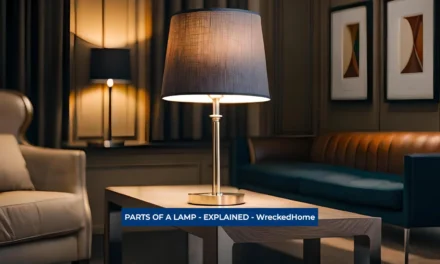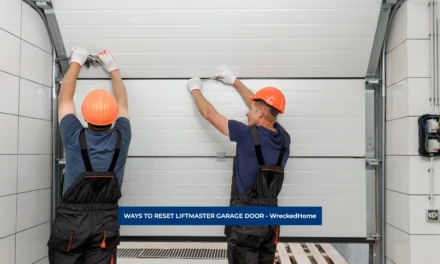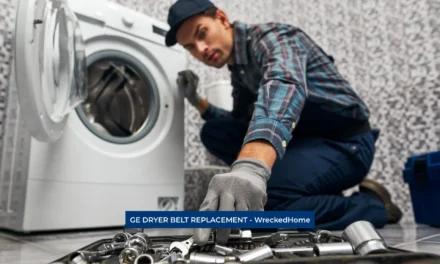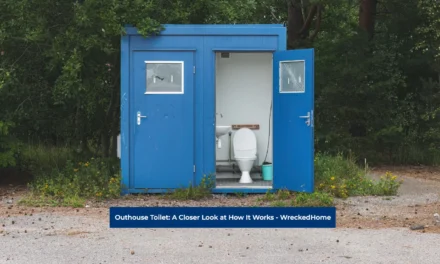When it comes to creating a perfect home, even the most minor aspect counts. From building materials to structure and foundation to siding and roofing, everything adds up to put together your dream residence. But aren’t you ignoring another critical component? House skirting may be the less prominent part, but it plays a vital role in the overall structure and makes your project look complete.
So you’ve done with building a house with a solid foundation and excellent structure. Despite the tremendous construction skills, it doesn’t give a professional look. It is because of the unappealing gap. It seems like the project is unfinished or the constructor has left it halfway. Thankfully, skirting emerges as a perfect solution for concealing open spaces.
House skirting may seem like decorative stuff as it makes homes more appealing. However, this is not just the case. Apart from aesthetic appeal, skirting aids in pest control, protection, ventilation, and insulation.
What Is House Skirting?
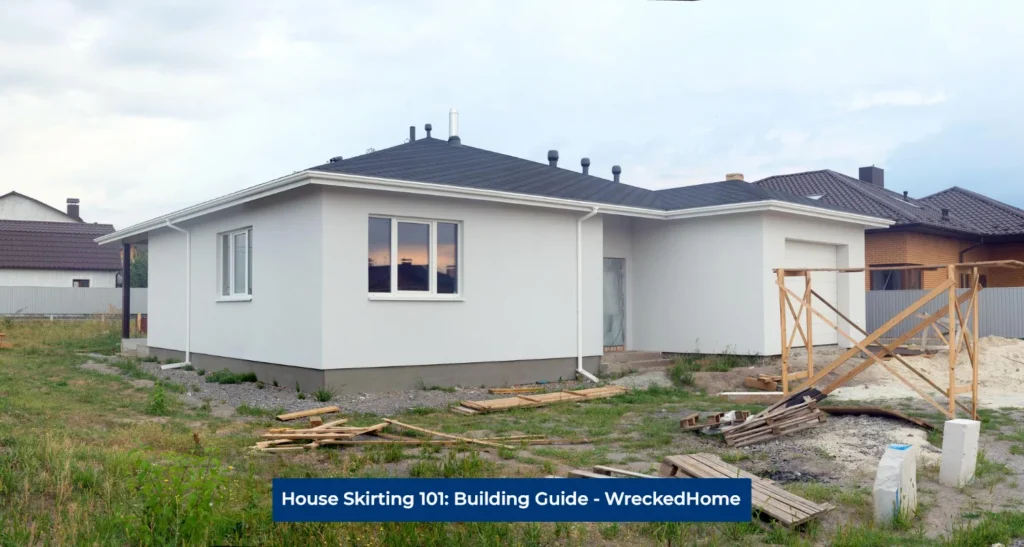
Before proceeding to the building guide, let’s first analyze what home skirting is. It means the non-structural compartment, which is designed to cover the crawl space. It is usually built from a lightweight material that serves as a hurdle between the foundation of your home and the outdoor environment. Furthermore, vinyl or metal are usually used as the camouflaging material.
Benefits of House Skirting
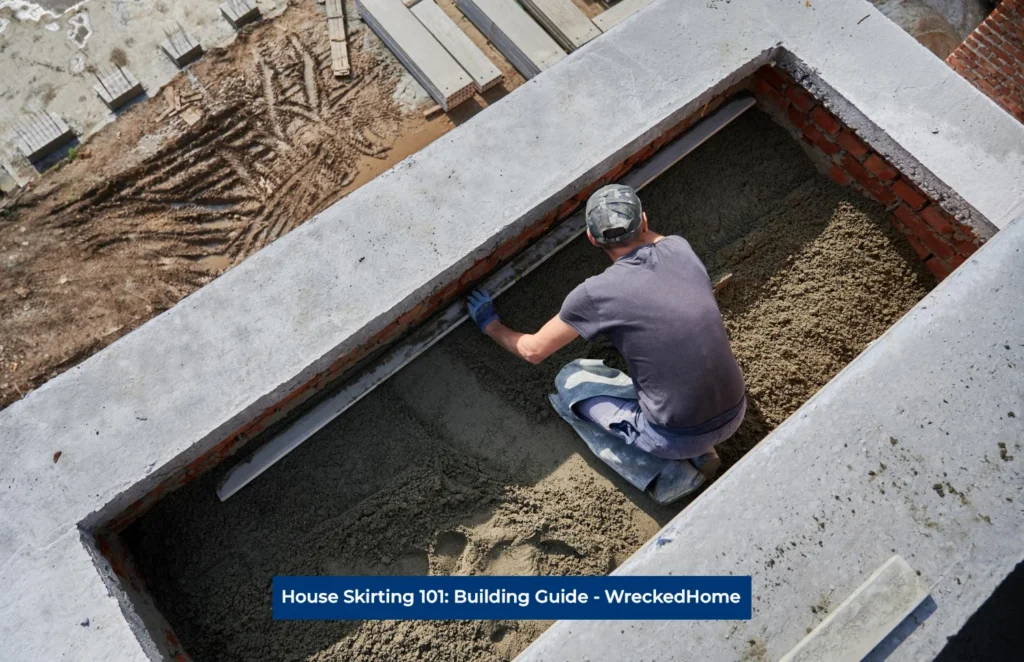
Apart from aesthetic reasons, house skirting bestows several crucial advantages to your home.
Completes the look
Raw concrete blocks, unfinished framings, gaps, and bare foundations can kill the overall looks and construction efforts. Therefore most homeowners skirt a shed to give a neat and finished look to their dream project.
House Skirting Helps In Insulation
Certain skirting materials also aid in insulation. The enclosure prevents heat loss in winter and makes your house warmer. On the other hand, it also deters the external heat from entering your living spaces in summer.
Pest Control
The area under your house can be a perfect living space for pests, insects, and rodents. Installing house skirting can save your home from these unwanted guests.
Serves as a Storage Chamber
Storing harmful chemicals like fertilizers, pool cleaners, gasoline or flammable liquids can be dangerous to children around the house. Hence, house skirting provides a safe shelter for your supplies and keeps them out of the reach of your little fellows.
Extends the Lifespan of your home
Stronger foundation plays a huge role in the durability of the house. Adding the final skirting layer can save your home from rotting and chewing underneath.
Visit our store for 10% off our Home Maintenance products here.
House Skirting – Installation procedure
Installing house skirting isn’t as easy as it seems. If you’re new to carpentry, it is better to hire a professional than take risks.
Without further ado, let’s get straight into the installation procedure
Required Materials and Tools
- Skirting panels
- Measuring tape
- Level or plumb bob
- Ground stakes
- Chalk line
- Hammer
- Circular saw
- Gloves
- Utility knife
- Screws or nails
- Drill machine
Step 1:Prepare the Working Area
Clean the working area from any sort of obstruction, like debris, weeds, or rocks. The installation ground should be leveled and even. In case of a slope, use blocks or gravel to get a level base.
Step 2:Get the Perimeter
Once you have got a nice and flat working area, start taking measurements. For this take a measuring tape and take lengths of all sides. It’s better to mark the skirting area with chalk to avoid errors. Adding all the lengths will give you the perimeter.
Step 3: Take Heights
Suppliers can provide you with skirting materials with the help of average calculations of your home. However, taking manual measurements is recommended for precision and accuracy.
Take lengths for all sides as well as front and back edges. At last, you will get six lengths. Add up all of them and divide by six. Now you have the average skirting height.
Step 4: Position the Bottom Rail
Adding a bottom rail to hour house skirting not only provides a non-shifting base but also secures the panels from damage.
Next, draw a reference chalk line and align the pieces of the bottom rail on it. Start with the corner parts and proceed toward the rest. Lastly, fix them in place with the help of group spikes.
Step 5: Install the Top Rail
Once you have done with the bottom one, move on to fixing the top rail. Remember to leave enough space as many skirting materials expand or contract with temperature changes. Vacating a half inch of room would be enough.
Step 6: Cut the Skirting Panels
Some of the skirting panels come pre-cut so that you can install them directly. If that’s not the case, you will have to do it yourself. Make sure to cut them precisely according to the calculated measurements. Next, slide each panel inside the rail. Finish off the process by adjusting the corner panel.
Step: 7 Final Check
Now take an observational round around the house and examine the panels, fix the overlapping panels with the help of a tin snip and trim the edges to get the final refined look.
Materials for Best House Skirting
Going through the installation procedure isn’t enough unless you know the best skirting material for your home. You might have seen a variety of them. Each house skirting material favors different environmental conditions and comes at different prices. Let’s have a closer look at some of the most popular options.
Vinyl Skirting
When choosing the best mobile home skirting material, Vinyl cannot be overlooked. It is one of the cheapest materials that can blend easily with your house exterior. Most DIYers choose this option because of its easy installation. Moreover, it also facilitates easy access to your crawl spaces.
Cons
- Can get damaged easily
- Becomes brittle when exposed to high temperatures
- Minimises airflow
Concrete Skirting
If you’re up to a permanent and durable skirting for your home, look no further. Concrete skirting is one of the most resilient and long-lasting options. Unlike vinyl or wood, it doesn’t deteriorate or rot. In addition, investing in concrete skirting will save you from repair and replacement expenses.
Cons
- Very expensive
- Difficult to install
- Restricts airflow
Brick Skirting
Here comes another permanent skirting alternative. Similar to concrete skirting, it is also a durable option that can withstand extreme temperature changes and climatic conditions. It uses cinder blocks, which add more strength and rigidity to your home’s foundation. Moreover, brick skirting does not restrict airflow, saving your crawl spaces from moisture and mold.
Cons
- You will need to hire professionals
- Expensive
Hardie Board Skirting
Indeed, wood skirting can boost the overall aesthetic appeal of your house but it can deteriorate easily. Therefore, many contractors are now using fiber cement boards, also called Hardie boards. Replicating the wooden looks, these boards are sturdy, long-lasting, and do not decay. Make sure to install it slightly above the ground. Otherwise, the panels will soak up all the ground moisture and can break.
Cons
- Can absorb water if comes in contact with ground
- Expensive
- Difficult to remove
Lattice Skirting
Have you noticed a criss-cross skirting pattern? That simple cross-hatched design is lattice skirting. The pocket-friendly material is easy to install and does not restrict airflow. On top of that, it helps in decreasing moisture buildup.
Cons
- Allows small critters to enter the crawl space
- Not enough sturdy
- Cannot withstand landscaping
- Does not look blended with all house exteriors
Conclusion
Indeed house skirting is as crucial as other building components. It’s just not about hiding the ductwork and pipes, the procedure adds up an extra layer of protection to your home. Besides improving the aesthetics, it saves you from troublesome cleaning and maintenance procedures.
This building guide will help you to tackle your skirting project efficiently. Don’t forget to consider your location and the overall design of your home before choosing the skirting material.
Not just deciding on the right material is important. Proper installation and regular maintenance will make your project last for years.
For any repairs, installations, builds, or questions; We recommend you to hire a professional. Find A Pro Near You Here!
Frequently Asked Questions
How much does house skirting cost?
The overall skirting expense depends on various factors. First of all, the type and quality of skirting material you choose. Secondly, your house premieres will decide the amount of required skirting material. Vinyl and faux stone skirting are the cheapest of all. As far as permanent skirting is concerned, brick and concrete will cost you more because of the additional labor expense.
What is the most durable skirting option?
Brick skirting is the most durable of all. It doesn’t require frequent maintenance and repairs. Apart from being age-proof, brick skirting does not deteriorate or crack. Also, its fire and heat resistance nature makes it the most resilient option.
Which house skirting material is best in hot weather conditions?
Go for metal, concrete, or brick skirting, as they can resist extreme temperatures.
Do I need to hire a professional to install my house skirting?
Vinyl and metal panels facilitate easy installation and do not require skilled labor. However, bricks and concrete skirting can be challenging for a novice. Therefore it is advised to hire a specialised contractor or supplier to reduce installation errors.
Can heavy snowfall damage my house skirting?
Yes, it can! If your area receives heavy snowfall, then keep your skirting a bit raised from the ground.
How can I make my house skirting last for years?
Regular cleaning of the area around the skirting can secure it from rotting. Also, keep an eye on the damaged or worn panels.

